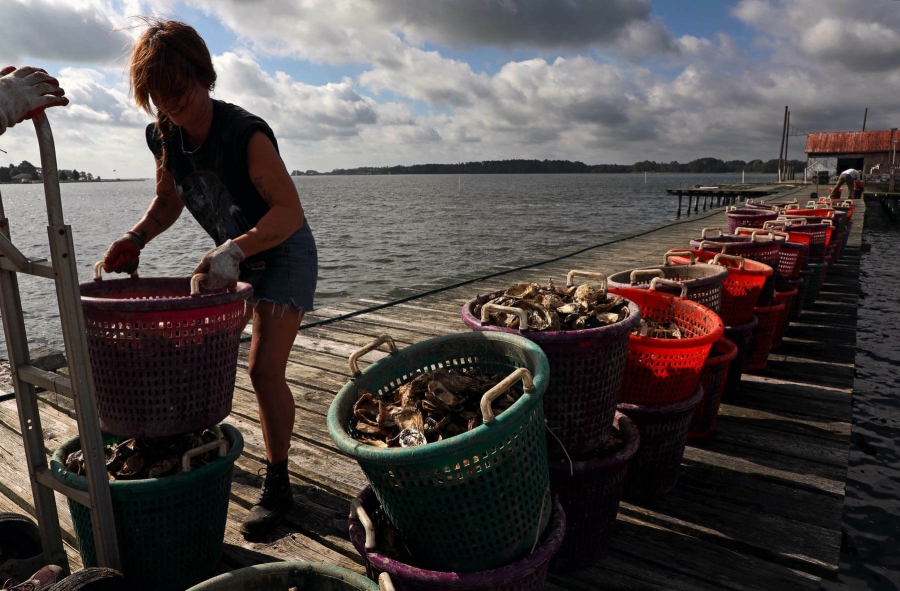The world’s largest oyster restoration project is completed in Virginia

Oyster reefs in two Virginia rivers—the Great Wicomico and Piankatank—have been officially restored as of November 30, 2021, marking progress toward the Oysters Outcome in the Chesapeake Bay Watershed Agreement.
In 2014, the Chesapeake Bay Program partnership set a goal to restore native oyster habitat and populations in 10 tributaries by 2025—five each in Maryland and Virginia. This was one of 31 outcomes of the Watershed Agreement, a regional restoration strategy that Washington, D.C., and all six of the Chesapeake Bay watershed states, including Virginia, committed to pursuing.
Thanks to continued support from Virginia and Maryland, as well as other partners of the Chesapeake Bay Program, we are on course to achieve the Oysters Outcome. In addition to the Piankatank and Great Wicomico, other completed sites include the Lafayette River and Eastern Branch of the Elizabeth River in Virginia, and Harris Creek and the Little Choptank and Tred Avon rivers in Maryland. Virginia selected the Eastern Branch of the Elizabeth River as an 11th “bonus” tributary to be restored.
Oysters were once abundant in the Bay and its tributaries, but have declined significantly due to overharvesting, disease, pollution and habitat loss. Restored oyster reefs bring both ecological and economic benefits to the Bay. As filter feeders, oysters can filter up to 50 gallons of water a day under certain conditions. Oyster reefs provide needed habitat for many Bay species, including fish and crabs. And reef restoration has the potential to increase commercial seafood harvest—especially of blue crab.
Thanks to the work of federal and state agencies and other organizations, the Piankatank River is now home to 438 acres of healthy oyster reef. It is currently the world’s largest completed oyster restoration project. The Great Wicomico River now has 127 acres of healthy oyster reef.
In late 2020, Virginia announced $10 million in new funding to support oyster restoration in the Chesapeake Bay. This marked the first time that capital funds, which are typically reserved for infrastructure projects, were explicitly designated to restore Virginia’s natural resources. This pursuit of clean water benefits a variety of marine life and gets us closer to swimmable, fishable rivers across the Chesapeake watershed.
Visit chesapeakeprogress.com to learn more about our oyster reef restoration effort, as well the other goals and outcomes of the Chesapeake Bay Program.

Comments
As a long time oyster (and Chesapeake bay seafood lover) I am an avid supporter of the efforts to restore the oyster beds in the greater bay. I recycle all of the oysters that I shuck at home. Keep up the great work!
Thank you!
Your comment has been received. Before it can be published, the comment will be reviewed by our team to ensure it adheres with our rules of engagement.
Back to recent stories